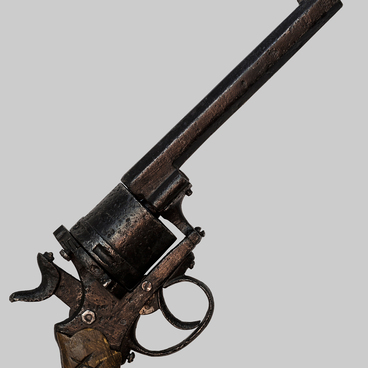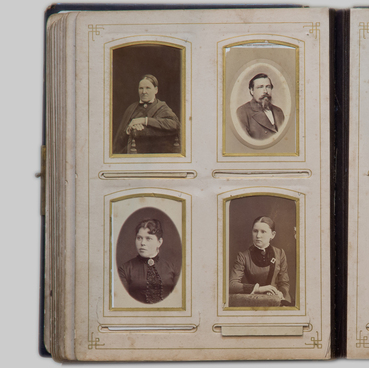The 17th century small iconostasis type portable folding icon is a remarkable exhibit in Berezniki collection of tempera painting. ‘The Mother of God of the Sign with Hagia Sophia - the Wisdom of God and the Holidays’ entered the museum from the Church of the Vladimir Icon of the Mother of God in Usolye. The history of this exhibit is connected with the names of two representatives of the Stroganov family.
The portable folding icon is an example of Stroganov’s icon painting. This trend was formed in the late 16th - early 17th centuries and was directly related to the life and work of the Stroganov merchants. Famous patrons organized workshops, built temples and decorated them according to their own taste. Stroganov icons are distinguished by restrained coloring, attention to detail and a high level of craftsmanship.
It is believed that the folding icon was a road icon of Grigory Stroganov. Grigory Stroganov (1656-1715) was a major Russian industrialist, landowner, financier and politician. He was a descendant of Anikey Stroganov, the founder of Usolye and Pysk Monastery.
Almost two centuries later, in 1850, Count Sergei Stroganov (1794-1882) visited Novoe Usolye. Surveying the Perm estate, the count was also interested in the antiquities of the Upper Kama churches. Judging by the record preserved on the fold, later Stroganov took the icon of the Mother of God to Moscow for restoration.
The interest in the Upper Kama ancient Russian monuments is not accidental, since Sergei Stroganov is known not only as a statesman and military leader, but also as the founder of a free art school in Moscow - the Stroganov School. In addition, he had a collection icons of “Stroganov” icon-painting.
In the upper part of the folding, the pommel, St. Sophia with the forthcoming Mother of God and St. John the Forerunner is depicted. And higher above them there are images of six angels.
The folds above depict the Most Holy Mother and the Archangel Gabriel to show the scene of the Annunciation. The centerpieces contain 16 elaborate compositions - holidays, scenes from a passionate cycle and scenes of miracles. Each composition occupies an area of only 5×7 centimeters, which require the fine approach of a miniaturist from the icon painter.
From the outside, the master covered the body with leather, upholstered with metal squares and braces, and provided a fastener. The inner walls of the fold are covered with partly preserved burgundy velvet.
All parts of the foldable have an ark, that is, a recess on the surface of the icon board. The icon painter covered the planes of the ark with gold. Gilding shines through the colorful layers, giving the painting a subtle pearlescent shimmer. The margins of the ark are covered with ocher and delimited by a black outline, the frames along the outer edge of the fields are outlined with red cinnabar.
The central image of the fold has not survived, but according to documentary sources there was an icon of Our Lady of the Sign. To create a historical exposition, another icon was placed in the fold, not related to the history of the exhibit.
The portable folding icon is an example of Stroganov’s icon painting. This trend was formed in the late 16th - early 17th centuries and was directly related to the life and work of the Stroganov merchants. Famous patrons organized workshops, built temples and decorated them according to their own taste. Stroganov icons are distinguished by restrained coloring, attention to detail and a high level of craftsmanship.
It is believed that the folding icon was a road icon of Grigory Stroganov. Grigory Stroganov (1656-1715) was a major Russian industrialist, landowner, financier and politician. He was a descendant of Anikey Stroganov, the founder of Usolye and Pysk Monastery.
Almost two centuries later, in 1850, Count Sergei Stroganov (1794-1882) visited Novoe Usolye. Surveying the Perm estate, the count was also interested in the antiquities of the Upper Kama churches. Judging by the record preserved on the fold, later Stroganov took the icon of the Mother of God to Moscow for restoration.
The interest in the Upper Kama ancient Russian monuments is not accidental, since Sergei Stroganov is known not only as a statesman and military leader, but also as the founder of a free art school in Moscow - the Stroganov School. In addition, he had a collection icons of “Stroganov” icon-painting.
In the upper part of the folding, the pommel, St. Sophia with the forthcoming Mother of God and St. John the Forerunner is depicted. And higher above them there are images of six angels.
The folds above depict the Most Holy Mother and the Archangel Gabriel to show the scene of the Annunciation. The centerpieces contain 16 elaborate compositions - holidays, scenes from a passionate cycle and scenes of miracles. Each composition occupies an area of only 5×7 centimeters, which require the fine approach of a miniaturist from the icon painter.
From the outside, the master covered the body with leather, upholstered with metal squares and braces, and provided a fastener. The inner walls of the fold are covered with partly preserved burgundy velvet.
All parts of the foldable have an ark, that is, a recess on the surface of the icon board. The icon painter covered the planes of the ark with gold. Gilding shines through the colorful layers, giving the painting a subtle pearlescent shimmer. The margins of the ark are covered with ocher and delimited by a black outline, the frames along the outer edge of the fields are outlined with red cinnabar.
The central image of the fold has not survived, but according to documentary sources there was an icon of Our Lady of the Sign. To create a historical exposition, another icon was placed in the fold, not related to the history of the exhibit.



